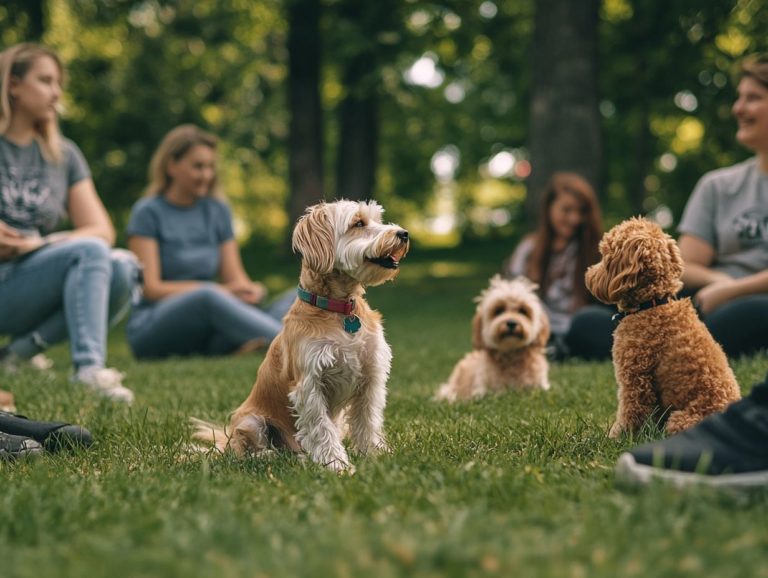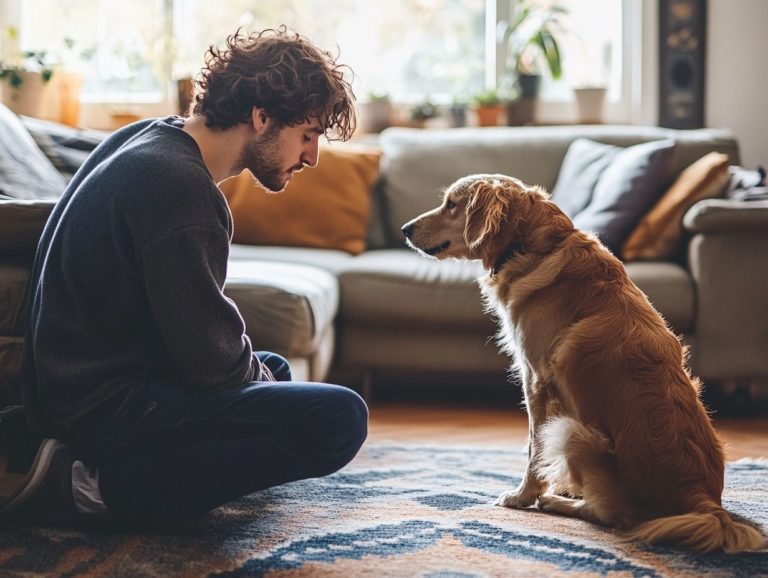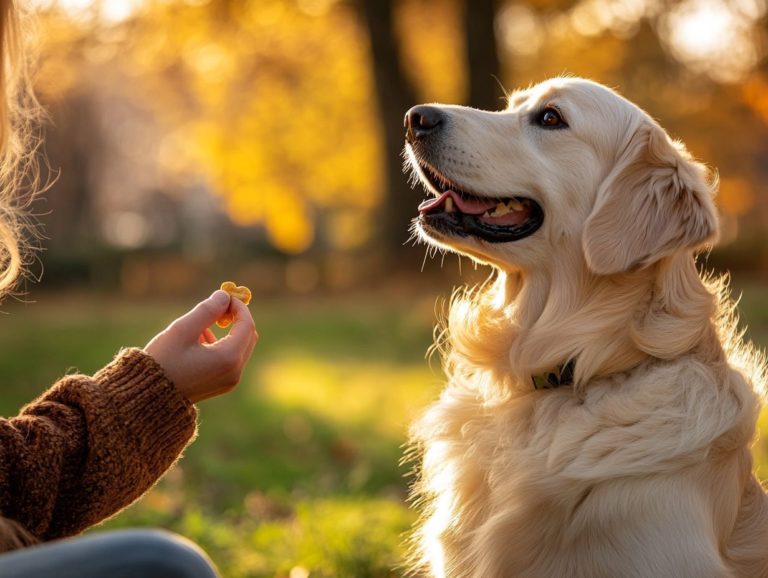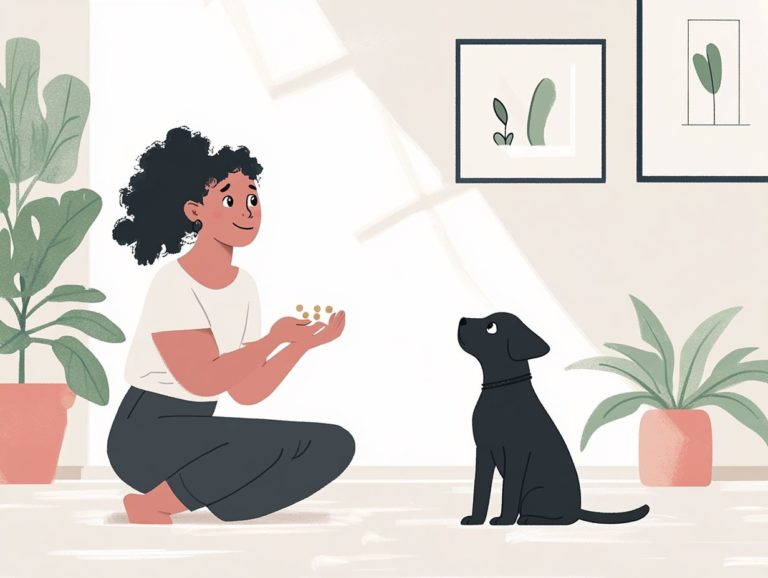Using Desensitization in Dog Training
Desensitization is an incredibly effective tool in dog training that empowers your furry friend to conquer fears and anxieties. Let s dive into the essence of desensitization and how it can profoundly enhance your dog’s behavior.
You will discover a step-by-step guide for implementing these techniques effectively, along with practical tips to steer clear of common pitfalls. We will also explore when it may be wise to seek professional assistance.
With a blend of patience and consistency, you can cultivate a happier, more confident companion by your side.
Contents
- Key Takeaways:
- Understanding Desensitization in Dog Training
- The Benefits of Desensitization
- Implementing Desensitization Techniques
- Common Mistakes to Avoid
- When to Seek Professional Help
- Frequently Asked Questions
- What is desensitization in dog training?
- How is desensitization used in dog training?
- When should desensitization be used in dog training?
- Can desensitization be done at home, or is it better to seek professional help?
- How long does desensitization take to show results?
- Is desensitization a permanent solution for behavior problems?
Key Takeaways:

- Desensitization (helping dogs get used to their fears) is a training technique that exposes dogs to their triggers in a controlled and safe environment to help them overcome fear and anxiety.
- By gradually increasing exposure to triggers, desensitization can improve a dog’s behavior and reduce fear and aggression, ultimately leading to a positive outcome in their training experience.
- Patience and consistency are key in desensitization training. Seeking professional help may be necessary if the dog’s behavior does not improve.
Understanding Desensitization in Dog Training
Desensitization in dog training is a systematic approach designed to help your dog manage negative emotions like anxiety and fear through gradual exposure to specific triggers. This technique aims to modify your dog s behavior, nurturing a more positive emotional response over time, particularly through methods such as flooding (exposing to high levels of fear triggers) and gradual exposure.
By utilizing methods such as counterconditioning (changing your dog’s feelings about the trigger) and positive reinforcement, you can create a calming environment for your pet. This leads to enhanced interactions in various settings, including dog parks. Understanding the nuances of desensitization is crucial for both trainers and owners, ensuring effective behavior modification for their canine companions.
What is Desensitization?
Desensitization is a behavioral therapy technique designed to help dogs conquer their fear triggers and negative emotions by gradually exposing them to these stimuli in a controlled environment.
This method starts by introducing your dog to its fear trigger at a low intensity, allowing it to acclimate without overwhelming stress. Over time, you can gradually increase this exposure, fostering habituation (getting used to something) and lessening the emotional response tied to specific stimuli.
It s crucial to identify your dog s unique triggers, whether they involve loud noises, unfamiliar people, or other animals. By understanding these fear triggers and applying desensitization step by step, you can significantly enhance your pet’s emotional well-being, nurturing a more confident and relaxed demeanor.
Success with this technique hinges on your patience and consistency, as each dog’s journey toward overcoming fear is uniquely its own. You must carefully monitor their behavior and emotional responses.
The Benefits of Desensitization
Desensitization brings a host of advantages for both you and your dog, primarily by alleviating anxiety and cultivating positive associations with once-feared stimuli. This behavior modification technique enriches your dog’s emotional well-being and strengthens the bond you share, resulting in a happier, more confident canine companion.
As your dog learns to respond differently to fear triggers, they can navigate various environments with a calm demeanor, transforming outings like trips to the dog park into enjoyable and stress-free experiences for both of you.
Start training today and watch your dog flourish!
How Desensitization Can Improve Behavior

Desensitization can significantly enhance your dog’s behavior by transforming their feelings towards anxiety-inducing stimuli through rewarding good behavior with treats or praise.
This gradual process involves exposing your dog to specific triggers at a low intensity while providing treats, praise, and encouragement. By associating fear-inducing situations with enjoyable experiences, your dog learns to adopt a calmer demeanor.
Over time, this method also strengthens the bond between you and your pet and boosts your dog’s confidence. Regular practice ensures that your dog can tackle various challenges with a more relaxed attitude.
Additionally, the consistent use of positive reinforcement reshapes your dog’s reactions and gives you the power to cultivate a secure and trusting environment.
Implementing Desensitization Techniques
Implementing desensitization techniques demands a structured strategy. This involves gradually exposing your dog to fear triggers while incorporating calming techniques and effective training methods for success.
By following this thoughtful approach, you can navigate your fears with greater ease and confidence.
Step-by-Step Guide to Desensitization Training
This step-by-step guide to desensitization training offers a systematic approach for you to help your dog gradually acclimate to fear triggers and effectively reduce anxiety.
By employing techniques rooted in exposure therapy, which is a way to help dogs face their fears in a controlled environment, you ll navigate the essential steps of introducing these triggers in a controlled manner.
The journey begins by identifying your dog s specific fears be it loud noises or unfamiliar people and then breaking those fears down into manageable components.
As you progress through the training, it s vital to monitor your dog s feelings, paying close attention to signs of stress or comfort. Positive reinforcement will be your ally at every stage, encouraging your dog as they tackle and conquer each challenge, ultimately fostering a deeper sense of security and confidence.
Common Mistakes to Avoid
Avoiding common mistakes in desensitization training is essential for achieving the best possible behavior modification results. Pay close attention to your dog’s stress signals; this will make a world of difference!
Tips for Successful Desensitization Training
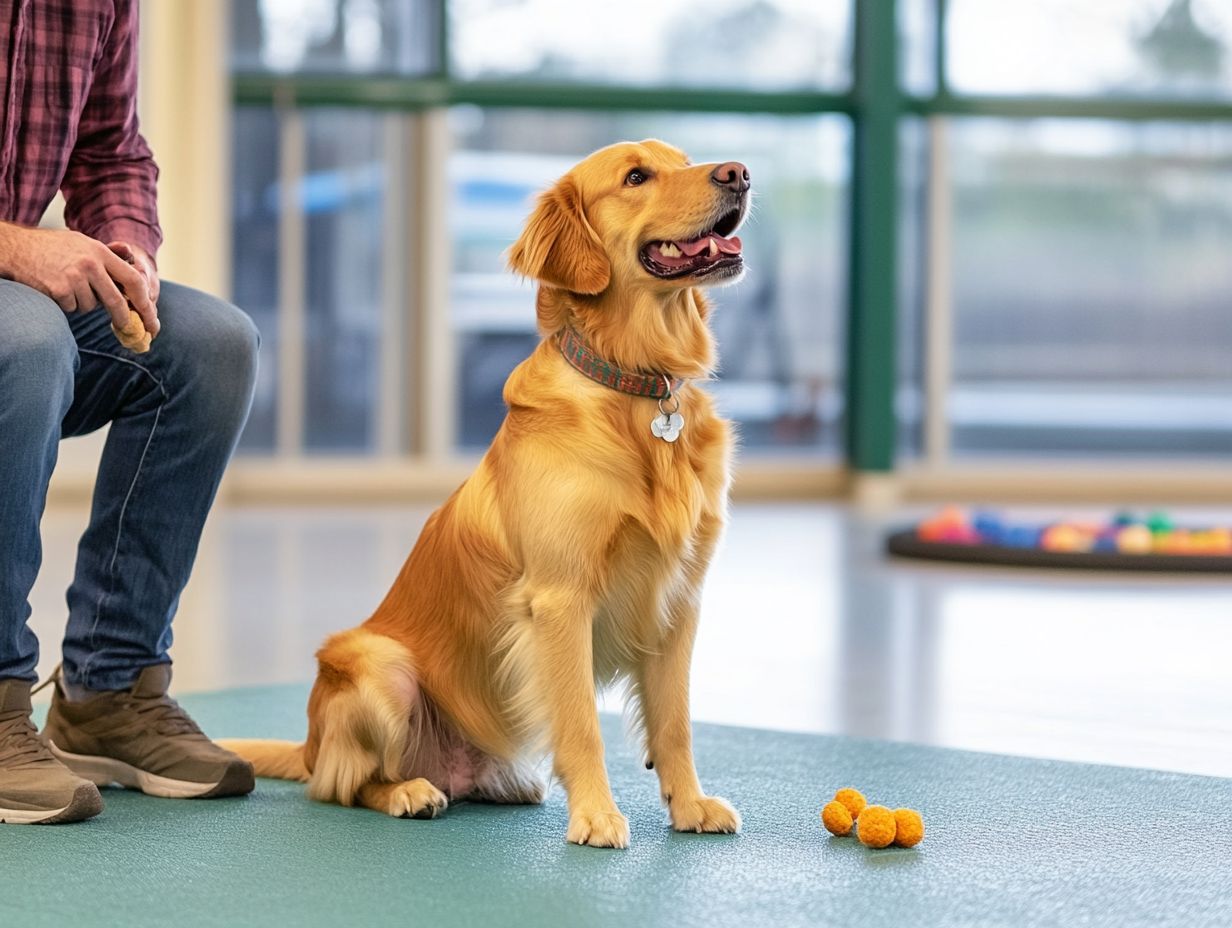
Successful desensitization training relies heavily on positive reinforcement strategies, enabling your dog to develop a more favorable emotional response to its fear triggers. This method eases the anxiety that may arise from certain stimuli and cultivates a trusting relationship between you and your canine companion.
To get started, pinpoint the specific triggers for your dog, which could range from loud noises to unfamiliar faces. Gradually introducing these stimuli while rewarding calm behaviors with treats or praise helps reinforce positive associations. Using high-value rewards can significantly amplify the effectiveness of your training efforts.
Remember, consistency is crucial; regular practice solidifies these new emotional responses, making it easier for your dog to confront its fears over time.
When to Seek Professional Help
Don t wait recognizing when to seek professional help for desensitization issues can change everything for your dog! This is particularly important when your dog’s anxiety, including separation anxiety, significantly impacts their quality of life and behavior.
Recognizing this need can be the first step toward restoring harmony and well-being for both you and your furry companion.
Recognizing When Desensitization is Not Enough
Recognizing when desensitization alone isn t enough empowers you to make informed choices about seeking additional professional help for your dog battling severe anxiety.
While gradually exposing your pup to anxiety-inducing situations can be effective, there are clear signs to watch for that indicate it might be time to explore more than just this approach. If your dog shows persistent signs of distress think excessive barking, destructive behavior, or uncontrollable shaking it s a strong signal that their anxiety levels aren t being adequately managed.
You might also observe your dog becoming increasingly withdrawn, avoiding contact, or even displaying aggression in familiar settings. In these situations, reaching out to a qualified animal behaviorist a professional who understands dog behavior or a veterinarian who specializes in canine anxiety can offer valuable help and tailored interventions, ultimately helping your dog to thrive.
The Importance of Patience and Consistency in Desensitization Training
Patience and consistency are crucial for the success of desensitization training, aiding your dog in adapting to various environments and enhancing their emotional responses over time.
Understand that this process is a marathon, not a sprint; it calls for a steady, thoughtful approach. By employing effective strategies, such as gradual exposure to stimuli and rewarding positive behaviors, while keeping training sessions short yet engaging, you can significantly improve the results.
Establishing a safe and controlled environment allows your dog to acclimatize at their own pace, fostering trust and confidence. Regular practice, along with gentle encouragement, will help your dog stay calm in previously triggering situations, underscoring the critical importance of patience and consistency.
Frequently Asked Questions

What is desensitization in dog training?
Desensitization is a behavior modification technique that involves gradually exposing a dog to a trigger that causes fear or anxiety in a controlled and safe environment to reduce their negative reaction to it.
How is desensitization used in dog training?
Desensitization is commonly used in dog training to address behavior problems such as fear, aggression, and anxiety. By gradually exposing the dog to the trigger that causes the unwanted behavior, the dog can learn to remain calm and relaxed in its presence.
When should desensitization be used in dog training?
Desensitization can be applied in various situations, such as introducing a new puppy to a household with existing pets, helping a dog overcome separation anxiety, or teaching a dog to feel comfortable with unfamiliar people or environments.
Can desensitization be done at home, or is it better to seek professional help?
Desensitization can be done at home, but it is advisable to seek professional help from a certified dog trainer or behaviorist. They have the expertise to create a tailored desensitization plan for your dog’s specific needs and ensure that it is done safely and effectively.
How long does desensitization take to show results?
The timeline for desensitization to show results can vary depending on the individual dog and the severity of their behavior issue. It may take weeks or even months of consistent training and gradual exposure to see improvements. Patience and consistency are key for successful desensitization.
Is desensitization a permanent solution for behavior problems?
Desensitization can effectively address behavior problems in dogs, but it is essential to continue reinforcing the training and techniques even after achieving the desired results. Dogs can regress if they are not consistently exposed to the trigger and reinforced with positive behaviors.


